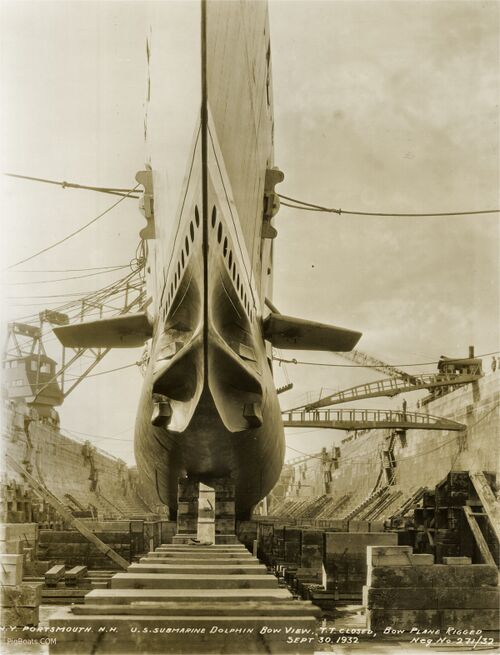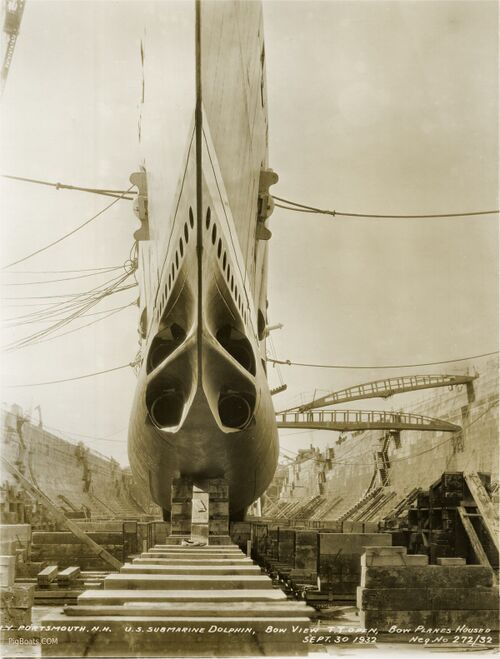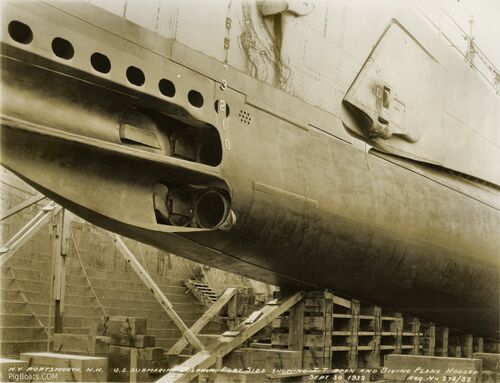Dolphin 1932 drydocking

US Navy Photo Contributed by Roger Torgeson

US Navy Photo Contributed by Roger Torgeson

The second piece is a hydrodynamic fairing attached via a hinge to the outer door. When shut this fairing provides a smooth flow of water. When open it partially retracts into the superstructure to get out of the way of the weapon as it exits. The bumper on the fairing prevents the weapon from hanging up on or hitting the superstructure. As you can see there is also a bumper on the inside of the circular outer door for the same purpose.
The mechanism for opening and closing these tube fairings was fairly complicated and would have most likely caused the boat some maintenance problems.
The oval cutouts above the tubes are called limber holes and they allow rapid flooding and/or draining of this portion of the superstructure, which is open to the sea. The pressure hull is buried inside the outer hull to the right of this picture and can not be seen.
The numbers running vertically above the tubes are draft marks, used to tell the crew how deep in the water the boat is sitting while in port. Each number is 6 inches tall and there are 6 inches from the bottom of one number to the top of the next. The bottom "0" actually corresponds to 10 feet, meaning that when the water line is at the bottom of the 0 the hull directly below this number is 10 feet under the water. The "1" corresponds to 11 feet, and so on.
US Navy Photo Contributed by Roger Torgeson
Page created by:
Ric Hedman & David Johnston
1999 - 2023 - PigBoats.COM©
Mountlake Terrace, WA, Norfolk, VA
webmaster at pigboats dot com
